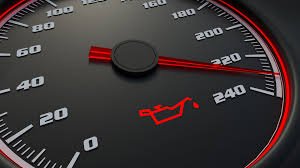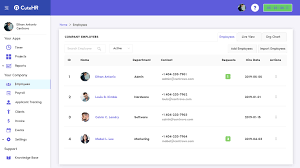What Does the Change Oil Light Mean? Causes, Fixes & When to Act

Every driver has seen it — that amber or red indicator that suddenly pops up on your dashboard: “Change Oil” or “Oil Service Required.” But many still ask, what does the change oil light mean, and is it something urgent?
In this comprehensive guide, we’ll walk you through exactly what the change oil light signifies, what causes it, and what you should do next. Ignoring this light could lead to serious engine damage and costly repairs — but responding to it properly is simple.
What Does the Change Oil Light Mean?
The question “What does the change oil light mean?” is more than just a query — it’s a key to understanding your vehicle’s health. This light is a built-in alert from your vehicle’s computer system, telling you it’s time for an oil change based on mileage, engine hours, or both.
It doesn’t always mean your oil is dangerously low. Instead, it means your oil has likely degraded or has reached its lifespan, making it less effective at lubricating your engine.
In short: It’s time to change your oil to prevent engine wear, overheating, or damage.
Why Is Engine Oil So Important?
Before diving deeper into the meaning of the oil light, let’s understand why engine oil matters:
-
Lubrication: Prevents metal-to-metal contact
-
Cooling: Reduces internal engine heat
-
Cleaning: Carries dirt and debris to the oil filter
-
Sealing: Fills microscopic gaps in the engine
When oil degrades, these functions stop working efficiently — and that’s when problems start.
Common Reasons the Change Oil Light Comes On
Understanding what does the change oil light mean also means recognizing why it’s triggered. Here are some of the most common causes:
1. Mileage Limit Reached
Most modern vehicles are programmed to alert you for an oil change every 3,000 to 10,000 miles, depending on manufacturer recommendations and oil type.
2. Time-Based Reminder
Even if you don’t drive often, oil degrades over time. Some systems are set to trigger the light after a certain period — typically 6 months.
3. Driving Conditions
Frequent short trips, stop-and-go traffic, or extreme temperatures can all cause faster oil degradation and trigger the light sooner.
4. Sensor or Oil Life Monitor
Advanced vehicles use sensors to detect oil quality and trigger the light when oil becomes too dirty or loses viscosity.
What Should You Do When the Light Comes On?
If you’re wondering what does the change oil light mean and how to respond, follow these steps:
Step 1: Check Your Oil
Pop the hood and use the dipstick to check the oil level and condition. If it’s dark, thick, or below the recommended level, it’s time for a change.
Step 2: Schedule an Oil Change
Don’t delay. Schedule an oil change as soon as possible — ideally within the next 100–200 miles. Use the correct oil type as recommended by your vehicle’s manual.
Step 3: Reset the Oil Light
After the oil change, your mechanic or technician should reset the light. If you’re doing it yourself, refer to your vehicle’s manual or follow on-screen prompts on newer cars.
How to Reset the Change Oil Light
In most vehicles, resetting the oil light is easy:
-
Turn the ignition to the ON position (do not start the engine)
-
Press and hold the “Reset” or “Trip” button
-
Wait for the light to blink or disappear
-
Turn the ignition OFF and then start the engine
For detailed vehicle-specific steps, visit Edmunds.com’s Maintenance Guide.
What Happens If You Ignore the Change Oil Light?
Ignoring the oil light can lead to serious consequences, including:
-
Poor engine performance
-
Overheating
-
Increased fuel consumption
-
Engine knocking or failure
-
Expensive repairs ($2,000–$5,000)
Many engine failures begin with dirty or insufficient oil. Acting promptly when the light appears is critical.
Difference Between “Change Oil” and “Check Oil” Light
Many people confuse these two. Here’s the difference:
| Light | Meaning |
|---|---|
| Change Oil | Scheduled maintenance — oil life is low or expired |
| Check Oil | Immediate alert — low oil pressure or dangerously low oil level |
If the Check Oil light comes on (usually red), stop your car immediately and inspect the engine.
Recommended Oil Change Intervals
Oil change intervals vary depending on several factors:
-
Conventional Oil: Every 3,000–5,000 miles
-
Synthetic Blend: Every 5,000–7,500 miles
-
Full Synthetic Oil: Every 7,500–10,000 miles
Always follow your vehicle manufacturer’s guidelines, found in your owner’s manual or online.
Signs You Might Need an Oil Change (Even Without the Light)
Even if the dashboard light isn’t on, look out for these signs:
-
Engine sounds louder than usual
-
Oil smells burnt
-
Exhaust smoke is darker
-
Car vibrates at idle
-
Decreased fuel efficiency
These may be early indicators that your oil is no longer performing well.
Can You Drive with the Change Oil Light On?
Yes — for a short period. Most vehicles are designed to give you some grace period (100–500 miles). However, driving too long can cause irreversible engine wear. The sooner you address it, the safer your engine will be.
Frequently Asked Questions (FAQ)
Q1: What does the change oil light mean on a Toyota, Honda, or Ford?
It means the engine oil life has expired or is close to expiring. It’s based on time, mileage, or both.
Q2: Is it safe to reset the light without changing the oil?
No. The light is a service reminder. Resetting it without changing the oil may mislead you and cause engine problems later.
Q3: What if I recently changed the oil but the light came back on?
It may not have been reset properly. Refer to your manual or visit a mechanic to confirm.
Tips to Avoid Oil-Related Problems
To avoid wondering what does the change oil light mean every few months, follow these tips:
-
Set reminders for oil changes
-
Use high-quality synthetic oil
-
Replace the oil filter every time you change oil
-
Check your oil monthly
-
Drive your car regularly to prevent oil sludge
These simple habits can keep your engine running smoothly for years.
Final Thoughts: What Does the Change Oil Light Mean?
In summary, what does the change oil light mean? It’s your vehicle’s way of saying: “It’s time for fresh oil!” Whether triggered by mileage, time, or sensor data, this light is a preventative alert that helps extend engine life and protect your investment.
Timely oil changes are one of the most affordable and effective ways to maintain your car’s health. Don’t ignore the warning. When that light comes on, take action — your engine will thank you later.
For more on proper vehicle care and manufacturer-recommended maintenance schedules, visit Edmunds Maintenance Guide.




